Abstract
The effects of dietary restriction of vitamin E and selenium were studied in male Long-Evans hooded rats. Weanling animals were maintained for 5-6 weeks on torula yeast-based diets, with or without the addition of vitamin E (150 IU/kg) or selenium (0.5 mg/kg), to form the following dietary groups: +E, +Se; +E, -Se; -E, +Se; -E, -Se, and a fifth group pair-fed with the -E, -Se group. This latter group exhibited a decreased rate of growth similar to the -E, -Se group. Lymphocyte blastogenesis in response to mitogens was decreased in animals fed the diets deficient in either vitamin E or selenium, and also in the pair-fed group. Very marked suppression of mitogen responses was seen in the doubly deficient group, as well as a greater loss of viability during culture. Spleen cell-mediated antibody-dependent lysis of chicken erythrocytes was increased in the doubly deficient group, although this difference could be abolished by the addition of catalase, but not indomethacin, to the culture medium. Dietary deficiency of vitamin E and selenium had no discernible effects on alveolar macrophage function, as measured by cell-mediated antibody-dependent cytolysis, killing of Staphylococcus aureus or regulation of T-lymphocyte blastogenesis.
Full text
PDF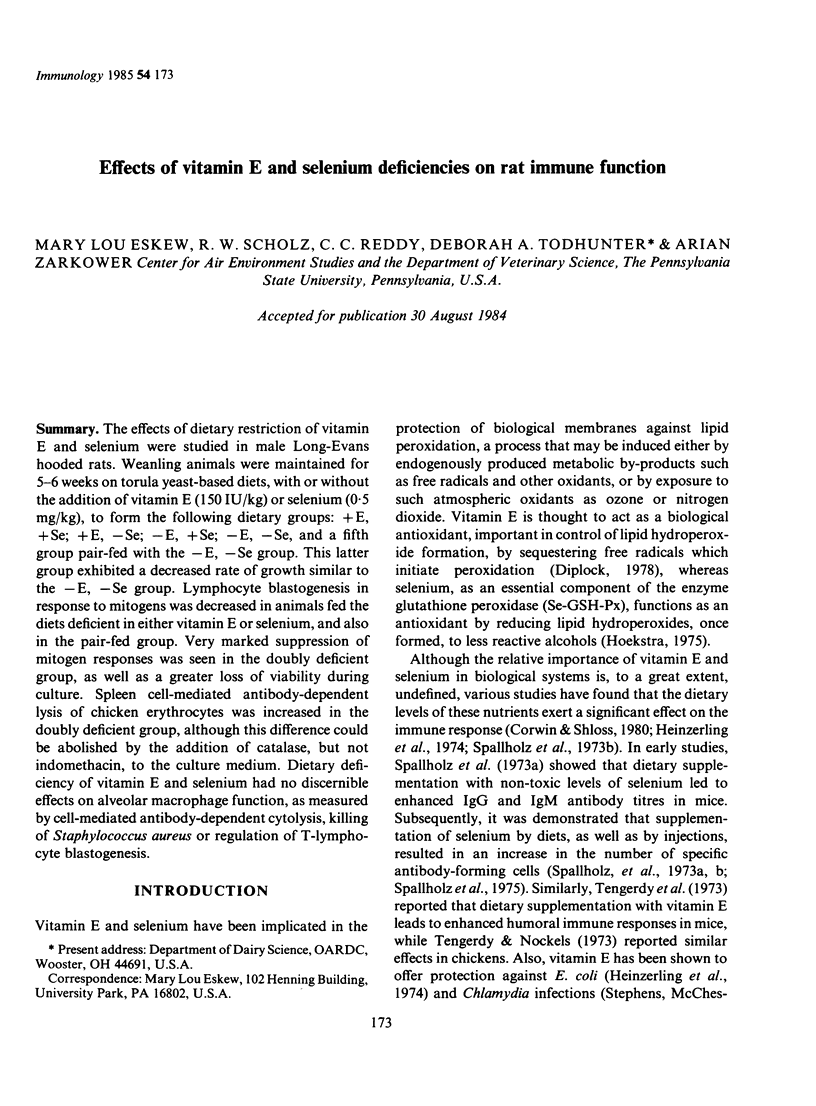
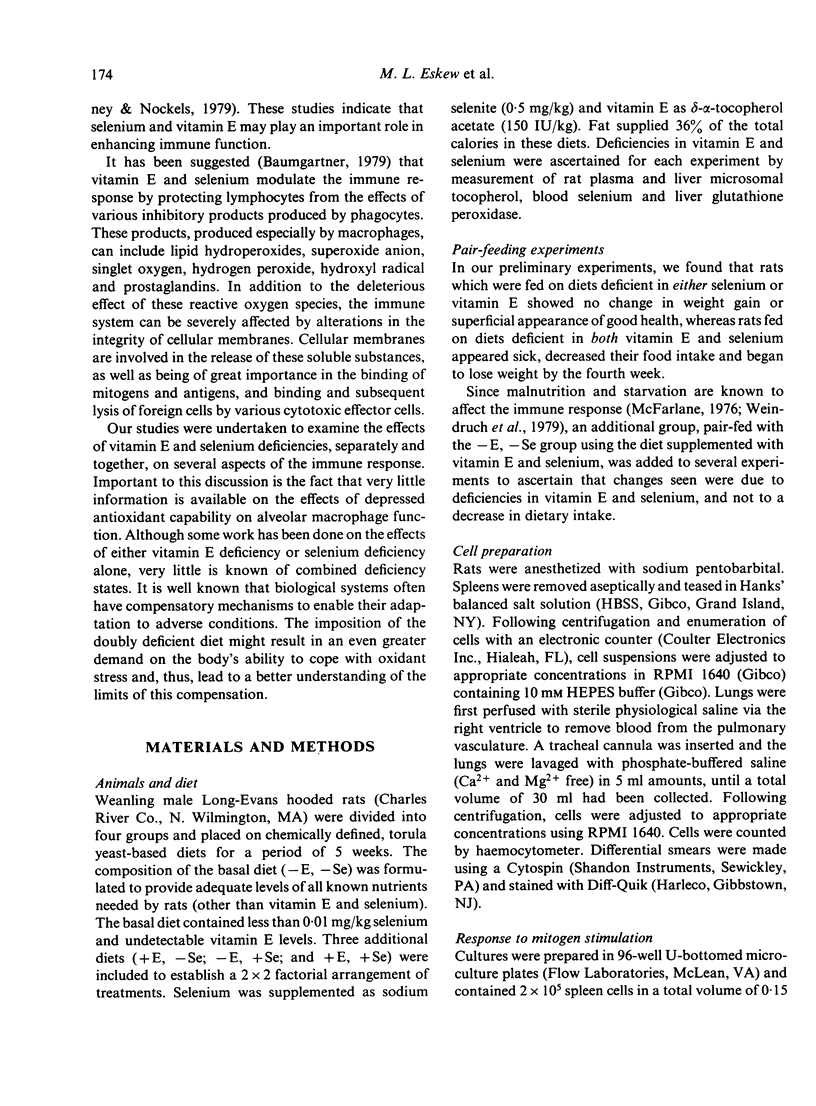
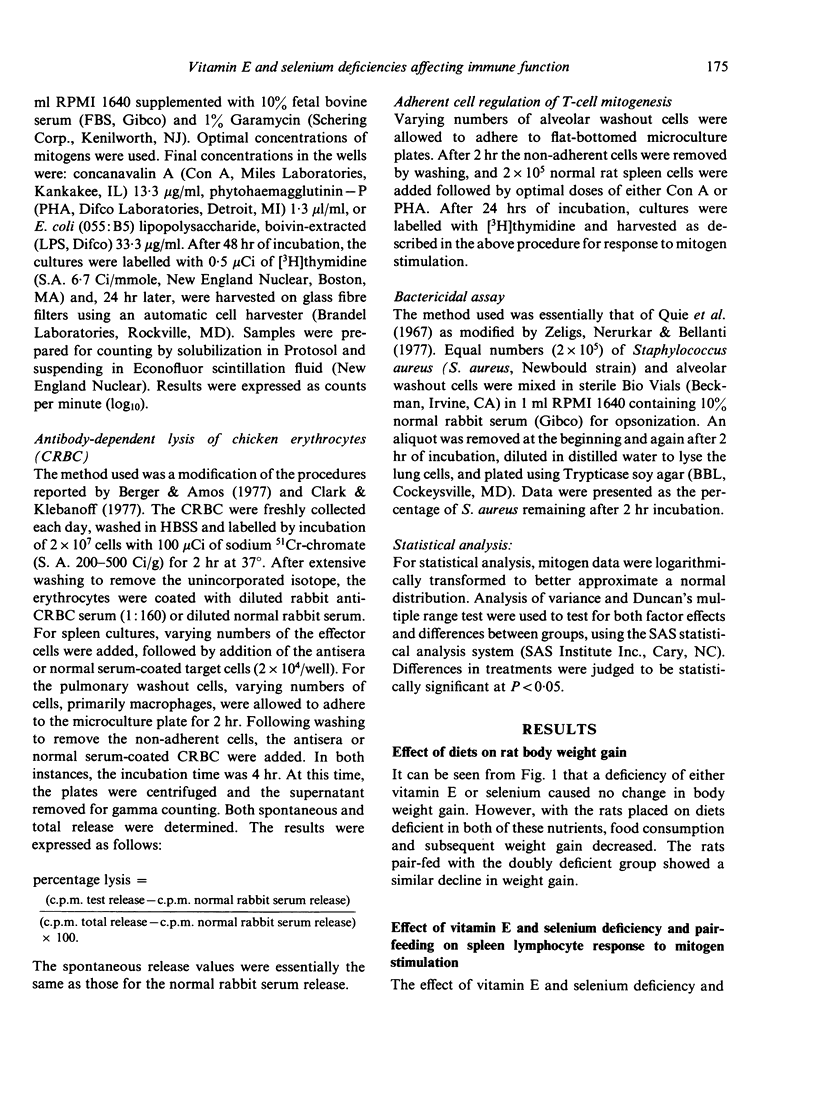
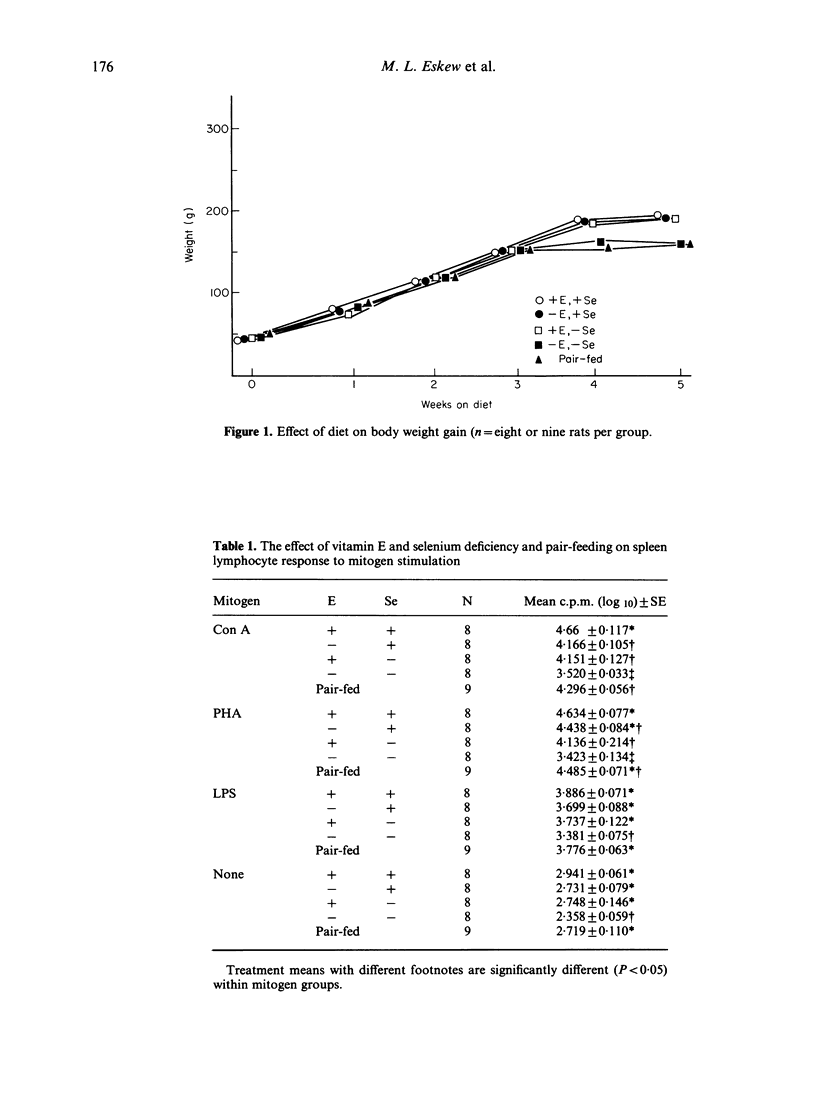
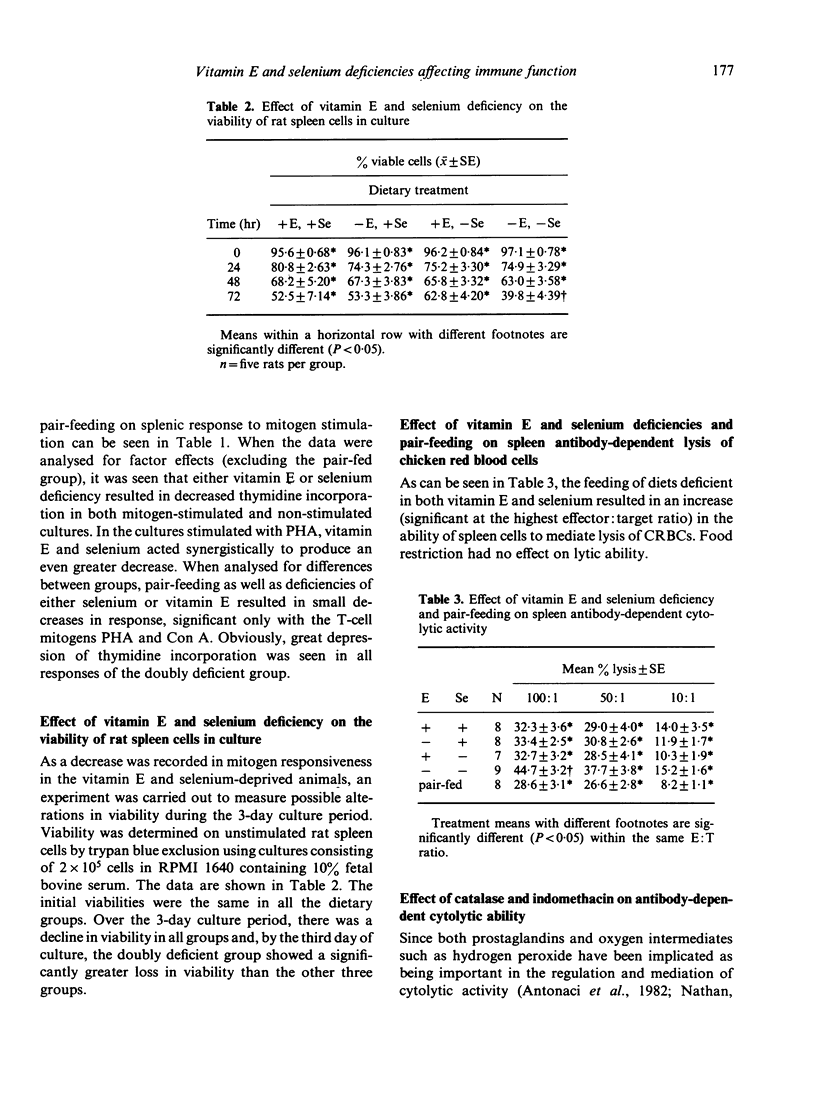
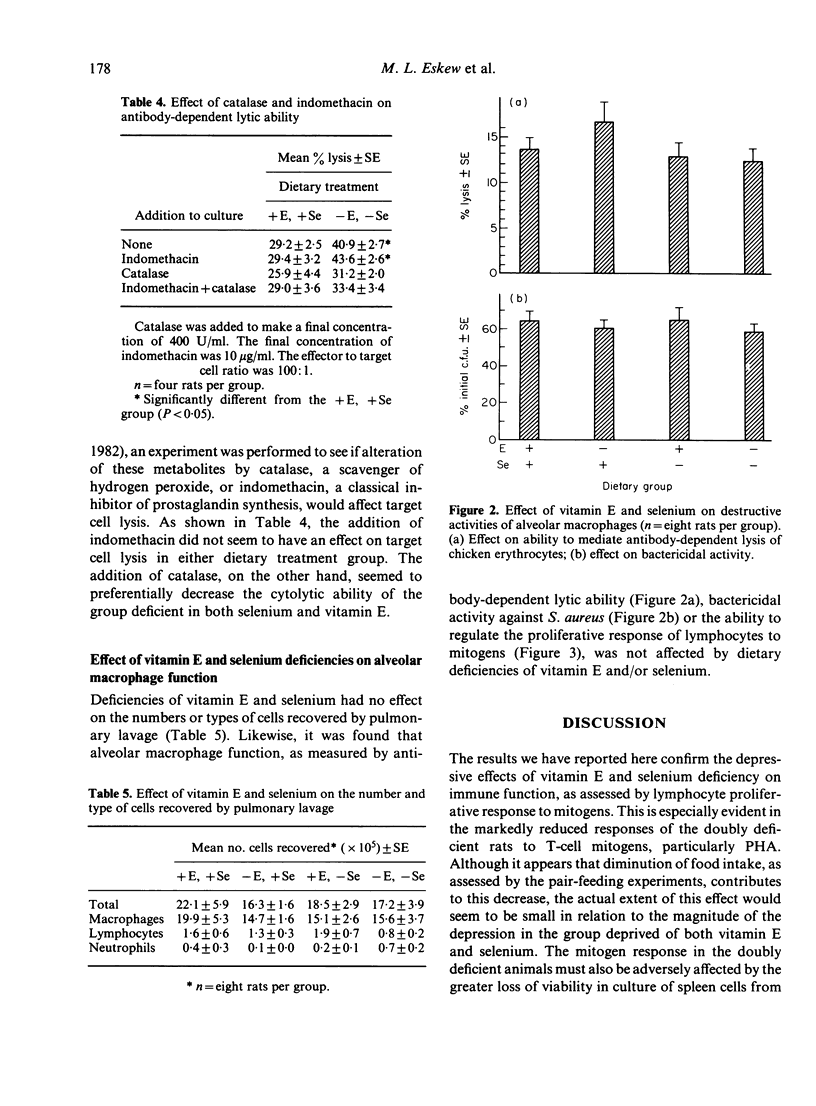
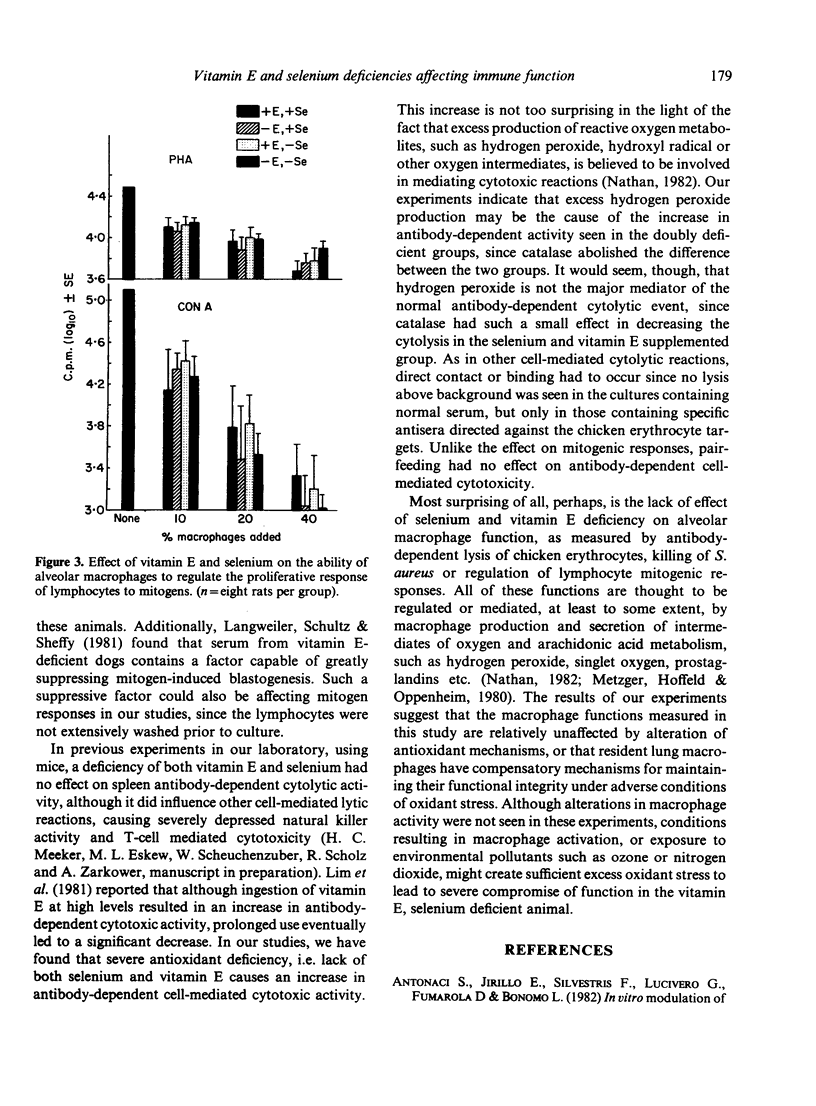
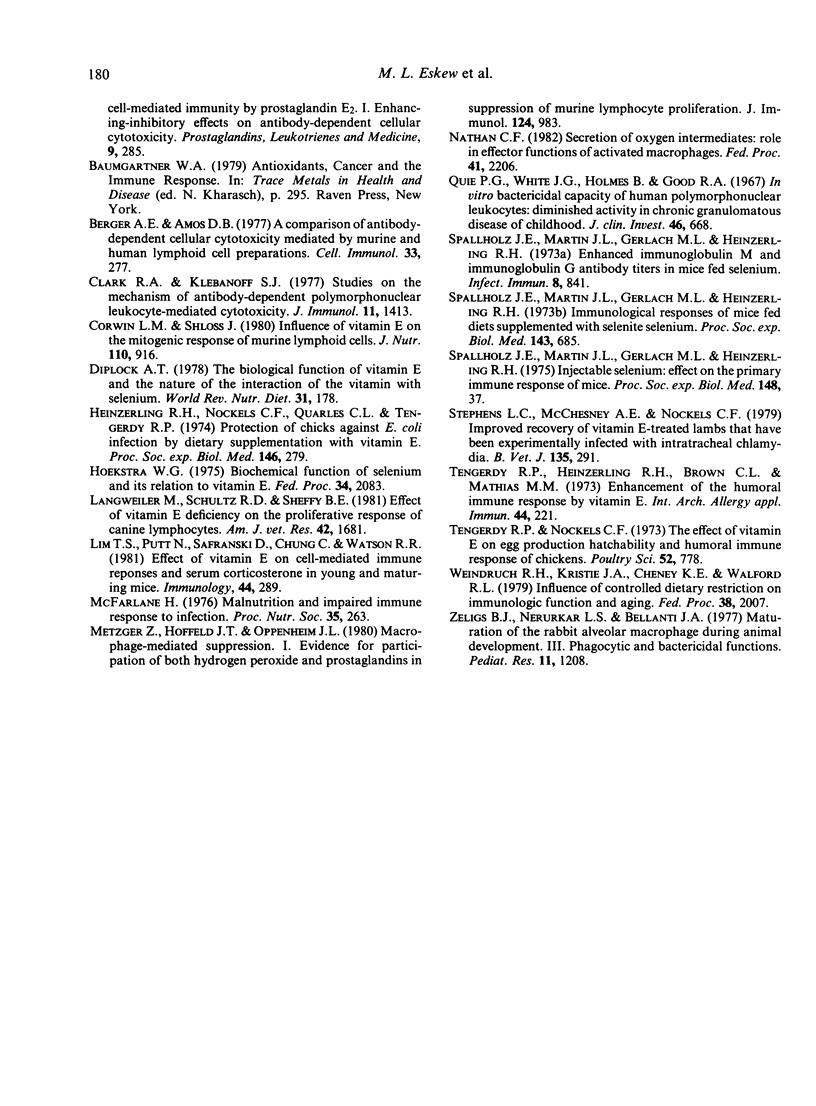
Selected References
These references are in PubMed. This may not be the complete list of references from this article.
- Berger A. E., Amos D. B. A comparison of antibody-dependent cellular cytotoxicity (ADCC) mediated by murine and human lymphoid cell populations. Cell Immunol. 1977 Oct;33(2):277–290. doi: 10.1016/0008-8749(77)90158-7. [DOI] [PubMed] [Google Scholar]
- Clark R. A., Klebanoff S. J. Studies on the mechanism of antibody-dependent polymorphonuclear leukocyte-mediated cytotoxicity. J Immunol. 1977 Oct;119(4):1413–1418. [PubMed] [Google Scholar]
- Corwin L. M., Shloss J. Influence of vitamin E on the mitogenic response of murine lymphoid cells. J Nutr. 1980 May;110(5):916–923. doi: 10.1093/jn/110.5.916. [DOI] [PubMed] [Google Scholar]
- Diplock A. T. The biological function of vitamin E and the nature of the interaction of the vitamin with selenium. World Rev Nutr Diet. 1978;31:178–183. doi: 10.1159/000401322. [DOI] [PubMed] [Google Scholar]
- Heinzerling R. H., Nockels C. F., Quarles C. L., Tengerdy R. P. Protection of chicks against E. coli infection by dietary supplementation with vitamin E. Proc Soc Exp Biol Med. 1974 May;146(1):279–283. doi: 10.3181/00379727-146-38087. [DOI] [PubMed] [Google Scholar]
- Hoekstra W. G. Biochemical function of selenium and its relation to vitamin E. Fed Proc. 1975 Oct;34(11):2083–2089. [PubMed] [Google Scholar]
- Langweiler M., Schultz R. D., Sheffy B. E. Effect of vitamin E deficiency on the proliferative response of canine lymphocytes. Am J Vet Res. 1981 Oct;42(10):1681–1685. [PubMed] [Google Scholar]
- Lim T. S., Putt N., Safranski D., Chung C., Watson R. R. Effect of vitamin E on cell-mediated immune responses and serum corticosterone in young and maturing mice. Immunology. 1981 Oct;44(2):289–295. [PMC free article] [PubMed] [Google Scholar]
- McFarlane H. Malnutrition and impaired immune response to infection. Proc Nutr Soc. 1976 Dec;35(3):263–272. doi: 10.1079/pns19760045. [DOI] [PubMed] [Google Scholar]
- Metzger Z., Hoffeld J. T., Oppenheim J. J. Macrophage-mediated suppression. I. Evidence for participation of both hdyrogen peroxide and prostaglandins in suppression of murine lymphocyte proliferation. J Immunol. 1980 Feb;124(2):983–988. [PubMed] [Google Scholar]
- Nathan C. F. Secretion of oxygen intermediates: role in effector functions of activated macrophages. Fed Proc. 1982 Apr;41(6):2206–2211. [PubMed] [Google Scholar]
- Quie P. G., White J. G., Holmes B., Good R. A. In vitro bactericidal capacity of human polymorphonuclear leukocytes: diminished activity in chronic granulomatous disease of childhood. J Clin Invest. 1967 Apr;46(4):668–679. doi: 10.1172/JCI105568. [DOI] [PMC free article] [PubMed] [Google Scholar]
- Spallholz J. E., Martin J. L., Gerlach M. L., Heinzerling R. H. Enhanced immunoglobulin M and immunoglobulin G antibody titers in mice fed selenium. Infect Immun. 1973 Nov;8(5):841–842. doi: 10.1128/iai.8.5.841-842.1973. [DOI] [PMC free article] [PubMed] [Google Scholar]
- Spallholz J. E., Martin J. L., Gerlach M. L., Heinzerling R. H. Immunologic responses of mice fed diets supplemented with selenite selenium. Proc Soc Exp Biol Med. 1973 Jul;143(3):685–689. doi: 10.3181/00379727-143-37391. [DOI] [PubMed] [Google Scholar]
- Spallholz J. E., Martin J. L., Gerlach M. L., Heinzerling R. H. Injectable selenium: effect on the primary response of mice (38472). Proc Soc Exp Biol Med. 1975 Jan;148(1):37–40. doi: 10.3181/00379727-148-38472. [DOI] [PubMed] [Google Scholar]
- Stephens L. C., McChesney A. E., Nockels C. F. Improved recovery of vitamin E-treated lambs that have been experimentally infected with intratracheal Chlamydia. Br Vet J. 1979 May-Jun;135(3):291–293. doi: 10.1016/s0007-1935(17)32890-7. [DOI] [PubMed] [Google Scholar]
- Tengerdy R. P., Henzerling R. H., Brown G. L., Mathias M. M. Enhancement of the humoral immune response by vitamin E. Int Arch Allergy Appl Immunol. 1973;44(2):221–232. doi: 10.1159/000230931. [DOI] [PubMed] [Google Scholar]
- Tengerdy R. P., Nockels C. F. The effect of vitamin E on egg production, hatchability and humoral immune response of chickens. Poult Sci. 1973 Mar;52(2):778–783. doi: 10.3382/ps.0520778. [DOI] [PubMed] [Google Scholar]
- Weindruch R. H., Kristie J. A., Cheney K. E., Walford R. L. Influence of controlled dietary restriction on immunologic function and aging. Fed Proc. 1979 May;38(6):2007–2016. [PubMed] [Google Scholar]
- Zeligs B. J., Nerurkar L. S., Bellanti J. A. Maturation of the rabbit alveolar macrophage during animal development. III. Phagocytic and bactericidal functions. Pediatr Res. 1977 Dec;11(12):1208–1211. doi: 10.1203/00006450-197712000-00008. [DOI] [PubMed] [Google Scholar]


